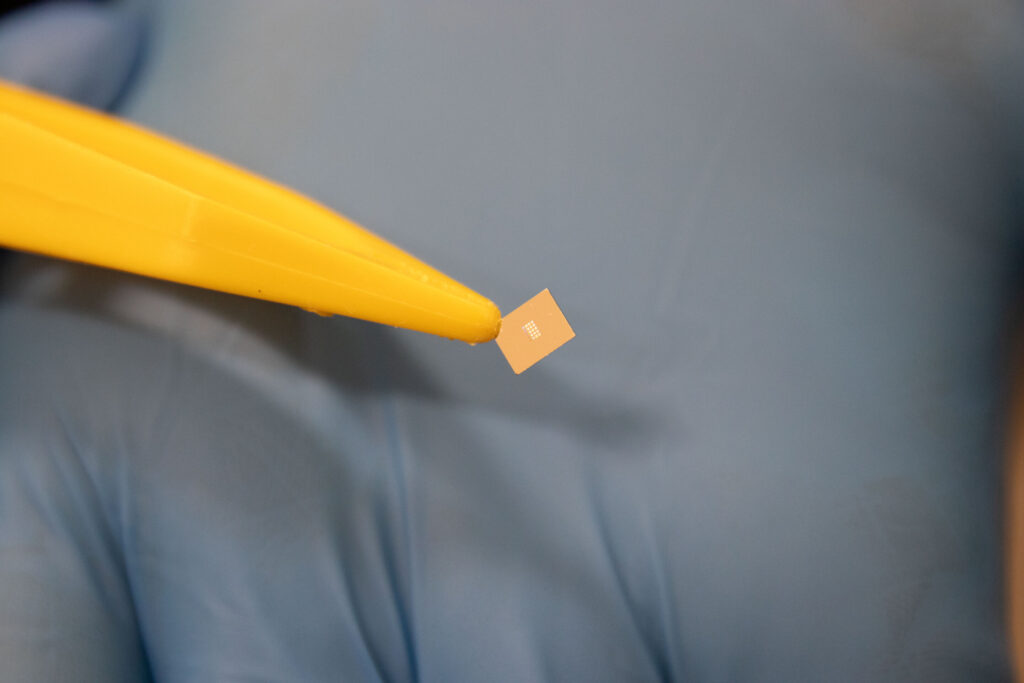Credit: University of Melbourne
× close
Credit: University of Melbourne
Data is a hot commodity in an increasingly health-conscious society. Logging steps with old-fashioned pedometers has given way to wearable fitness trackers monitoring heart rate, sleep cycles and blood oxygen levels, and the market has exploded in recent years. But one key aspect of health monitoring has yet to go mainstream: continuous air quality data is currently associated with spaces, not people.
Physicists at the ARC Center for Transformative Meta-Optical Systems Research are addressing the challenge of consumer access to air quality data through the development of a portable infrared microspectrometer that could one day be integrated into a wearable device to monitor multiple toxic and greenhouse gases, giving individuals more control over their exposure to harmful gases and enabling them to make more informed decisions about their health.
The new technology was developed by the Centre's University of Melbourne team. Microsystems and Nanoengineeringuses machine learning algorithms and metasurface spectral filter arrays to create a microspectrometer (MIMM) that uses a single sensor to detect the unique infrared signatures of multiple gases. The prototype is currently the size of a matchbox, but could be made even smaller.
Traditional infrared spectrometers are excellent gas detectors, but they are bulky instruments typically found only in laboratories. Current portable multi-gas detectors available for purchase and use in homes and office buildings contain multiple bulk sensor systems in a single housing, which increases the size and weight of the instrument and limits its usefulness.
They also use chemical resistors rather than spectroscopy, which gives inferior results and a limited lifetime. There is no path to miniaturizing these two devices using traditional optics, and the current technology will never be wearable or integrated into the Internet of Things.
Meanwhile, metasurface filters integrated with commercial IR detectors address the miniaturization issue by creating sensors out of materials just nanometers thick. In this case, TMOS researchers created a metasurface spectral filter array to create a sensor that could potentially sense any harmful gas. The filter array is made up of metal nanostructures on a silicon substrate.
Specifically, by varying the periodicity of the nanostructures, the spectral properties of these filters can be tuned to the wavelength of interest, and in this study their effectiveness was demonstrated for carbon dioxide, methane, ammonia, and methyl ethyl ketone.
“Our microspectrometer is a consumable-free, compact (~1cm) metasurface filter array integrated with a commercially available IR camera,” said lead author Jiajun Meng.3) and lightweight (~1 g). Machine learning algorithms are trained to analyze the data from the micro-spectrometer and predict what gases are present.”
“The next steps in our research will be to increase the sensitivity of the device and make the platform more robust,” said TMOS principal investigator Kenneth Crozier. “We're excited about this technology because with a bit more development, it could be applied to many other chemical detection problems, including solids and liquids.”
For more information:
Jiajun Meng et al. “Smart mid-infrared metasurface microspectrometer gas sensing system” Microsystems and Nanoengineering (2024). Publication date: 10.1038/s41378-024-00697-2
Journal Information:
Microsystems and Nanoengineering
Courtesy of the ARC Transformative Meta-Optical Systems Center of Excellence (TMOS)

